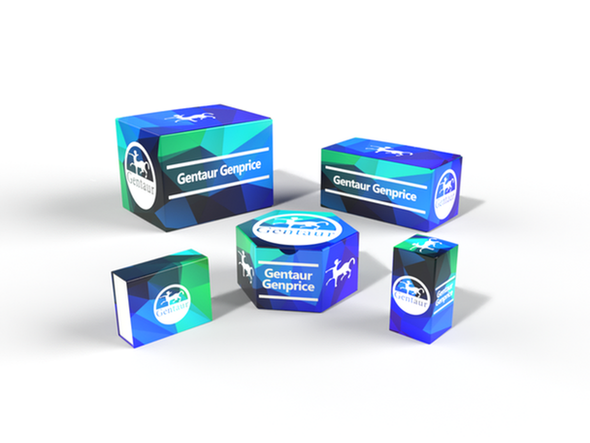740
Human Scavenger receptor class A member 5 (SCARA5) ELISA Kit | AE20641HU
- SKU:
- 740-AE20641HU
- Availability:
- Usually ships in 5 working days
Description
Human Scavenger receptor class A member 5 (SCARA5) ELISA Kit | AE20641HU | Gentaur UK, US & Europe Distribution
Species Reactivity: Human (Homo sapiens)
Abbreviation: SCARA5
Alternative Name: FLJ23907; MGC45780; NET33; Tesr; scavenger receptor class A; member 5|testis expressed scavenger receptor
Application: ELISA
Range: 0.156-10 ng/mL
Sensitivity: 0.057 ng/mL
Intra-Assay: ≤7.1%
Inter-Assay: ≤10.2%
Recovery: 1, 03
Sample Type: Serum, Plasma, Other biological fluids
Detection Method: Sandwich
Analysis Method : Quantitive
Test Principale: This assay employs a two-site sandwich ELISA to quantitate SCARA5 in samples. An antibody specific for SCARA5 has been pre-coated onto a microplate. Standards and samples are pipetted into the wells and anySCARA5 present is bound by the immobilized antibody. After removing any unbound substances, a biotin-conjugated antibody specific for SCARA5 is added to the wells. After washing, Streptavidin conjugated Horseradish Peroxidase (HRP) is added to the wells. Following a wash to remove any unbound avidin-enzyme reagent, a substrate solution is added to the wells and color develops in proportion to the amount of SCARA5 bound in the initial step. The color development is stopped and the intensity of the color is measured.
Product Overview: Scara5, encoding a deduced 491-amino acid protein that shares 88% sequence identity with the 495-amino acid human ortholog. Although overall identity with Scara1 is about 25%, Scara5 and Scara1 share many features, including an N-terminal cytoplasmic domain followed by a predicted transmembrane domain, a spacer region with several putative glycosylation sites, a collagenous domain, a hinge region, and a C-terminal scavenger receptor cysteine-rich domain (SRCR) . The SCARA5 protein was predicted to be trimeric, as are other collagenous transmembrane proteins, and this prediction was supported by Western blotting. Based on similarity to other members of this family, the trimer is present on the surface of the plasma membrane and anchored by the transmembrane domain.
Stability: The stability of ELISA kit is determined by the loss rate of activity. The loss rate of this kit is less than 5% within the expiration date under appropriate storage condition. The loss rate was determined by accelerated thermal degradation test. Keep the kit at 37°C for 4 and 7 days, and compare O.D.values of the kit kept at 37°C with that of at recommended temperature. (referring from China Biological Products Standard, which was calculated by the Arrhenius equation. For ELISA kit, 4 days storage at 37°C can be considered as 6 months at 2 - 8°C, which means 7 days at 37°C equaling 12 months at 2 - 8°C) .






